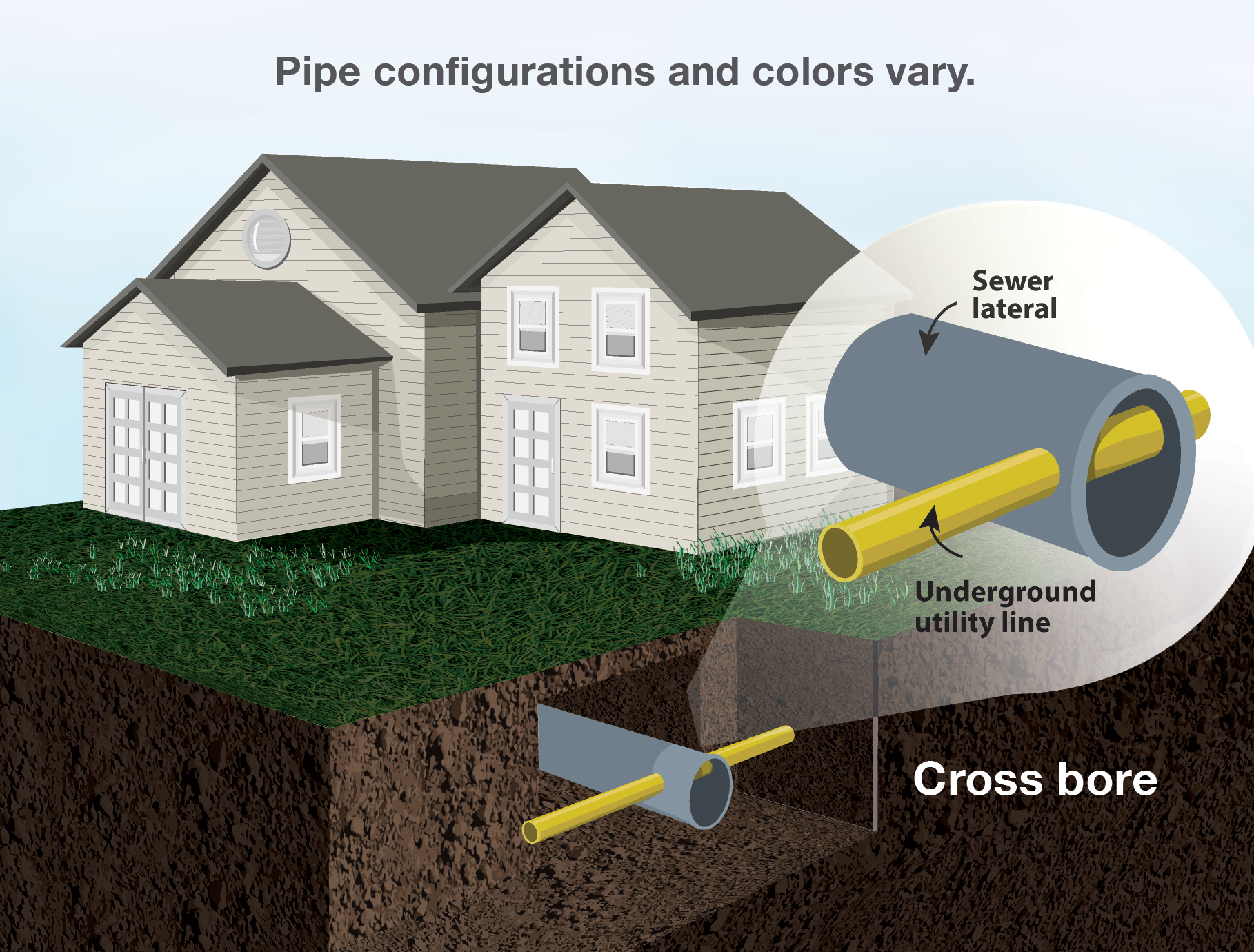| View in browser > |
 |
|
Welcome to National Grid’s Tips of the Trade for first responders. These tips are intended to help you respond safely and effectively to incidents involving natural gas and electricity. Please review them with your team.
|
|
| Responding to cross‑bore emergencies |
|
 |
| An underground utility line that has been inadvertently installed through a sewer pipe is known as a “cross bore.” A cross bore can go unnoticed until the utility line blocks the flow of waste in a sewer lateral. Removing the sewer blockage with mechanical clearing equipment can damage the cross bore, resulting in personal injury and property damage. |
|
|
|
 |
| The risks of cross-bore damage |
| If clearing equipment cuts into a cross‑bored natural gas pipe, leaking gas can enter the sewer system, posing a fire and explosion risk in multiple structures. Electrical cross bores pose risks as well: A plumber or drain cleaner who contacts a cross‑bored electric line with clearing equipment may suffer a serious electrical shock. |
| Dispatch response |
| Upon receiving the report of a confirmed or suspected cross‑bore incident, initiate a full public safety response appropriate to the reported hazard. If a natural gas cross bore is involved, instruct the caller to avoid using anything that could create a spark and to immediately evacuate the premises. Once first responders have been toned, notify National Grid of any reported cross‑bore incident and specify the involved utility system (electric or gas). |
| Firefighter response for a damaged natural gas cross bore |
| |
1. |
 |
Approach cautiously. Park at least 100 feet from the front of the building, upwind and away from manhole covers and storm sewer grates. |
|
| |
2. |
 |
Request the response of sewer department personnel and a map of the sewer system, as gas may rapidly migrate through sewer pipes and accumulate in multiple structures. |
|
| |
3. |
 |
Do NOT open or close underground gas valves in the street at any time. |
|
| |
4. |
 |
Evacuate per the DOT Emergency Response Guide 115. |
|
| |
5. |
 |
If you have been trained to do so, use a properly calibrated combustible gas indicator (CGI) around nearby manholes, vaults and sewer drains. |
|
| |
6. |
 |
Do NOT pull manhole covers to vent gas from sewer systems. Work with National Grid to develop a plan for venting manholes. |
|
| |
7. |
 |
Never ventilate a building without first coordinating with National Grid and verifying gas has been shut off and ignition sources have been eliminated. |
|
| |
8. |
 |
Do NOT enter structures unless operations are coordinated with National Grid and approved by your incident commander. |
|
| |
9. |
 |
If you are assigned to enter a structure, do so only with full personal protective equipment (PPE) including self‑contained breathing apparatus (SCBA). |
|
| |
10. |
 |
If power ventilation is necessary, use intrinsically safe ventilators and positive pressure ventilation on the upwind side. Remember: If a high concentration of gas is present, it may fall into the explosive range as a structure is ventilated. |
|
| |
11. |
 |
Have a charged hand line with a fog nozzle ready to cool combustible exposures and assist with rescue operations in the event of a fire. |
|
|
| For more first responder safety information, visit firstresponder.ngridsafety.com. |
|
|
|
| |
| |
|
| To report emergencies, call 911 and National Grid immediately. Always call 911 if you suspect a gas leak! |
| |
 |
| In case of gas emergencies: |
 |
Long Island and the Rockaways:
911 and 1‑800‑490‑0045 |
 |
Metro New York:
911 and 1‑718‑643‑4050 |
 |
Upstate New York:
911 and 1‑800‑892‑2345 |
 |
Massachusetts:
911 and 1‑800‑233‑5325 |
|
|
|
|
| |
|
|
|
| |
| |
|
 |
#14190 © 2024 Culver Media, LLC |
|
| |
|
|
|
 |
|
|